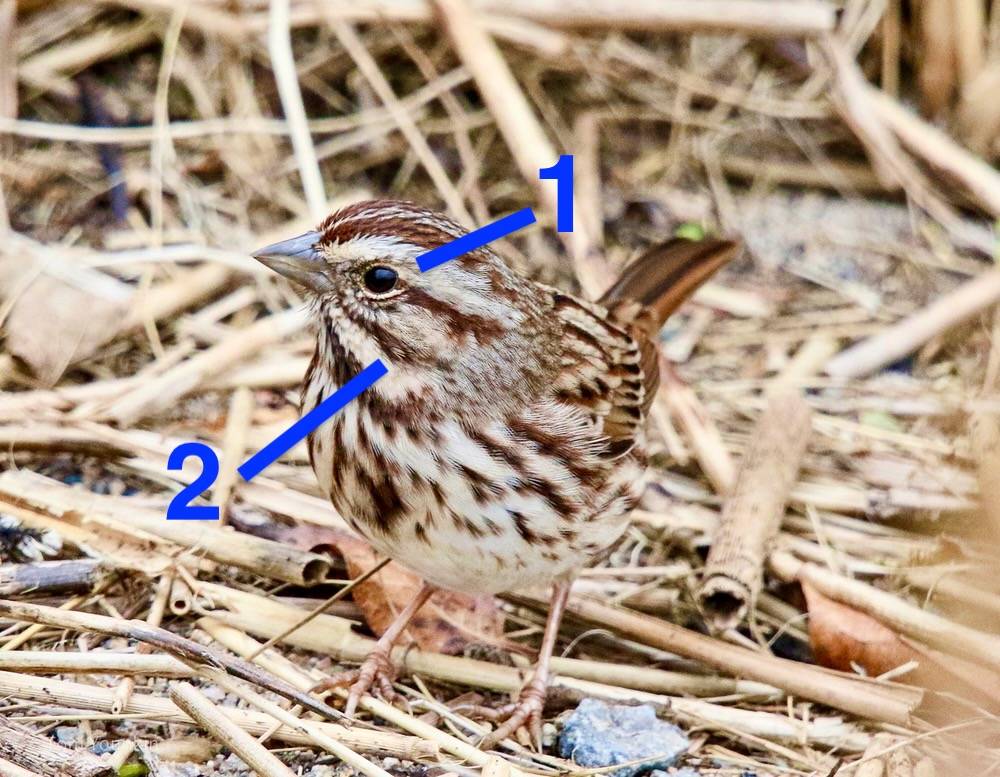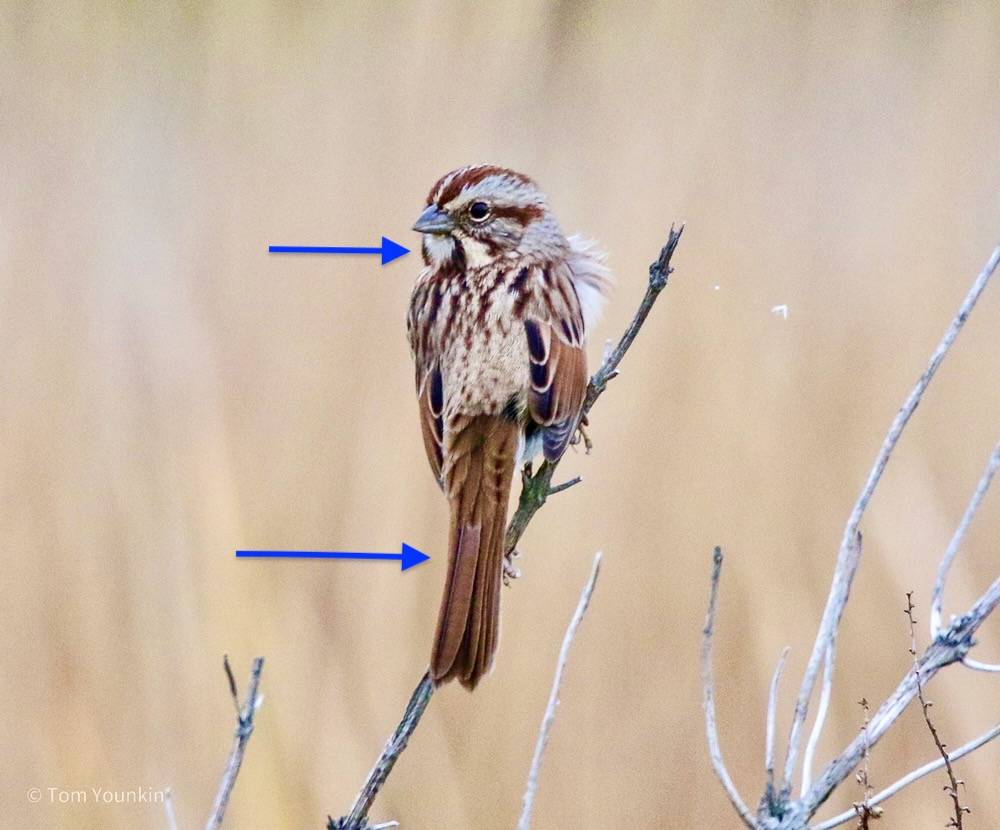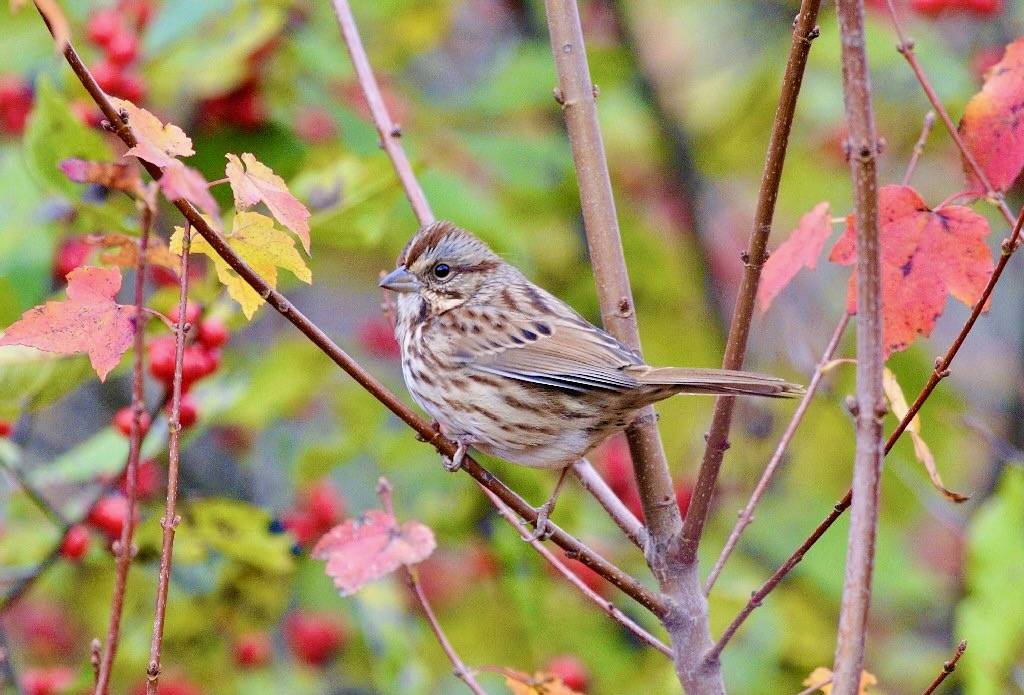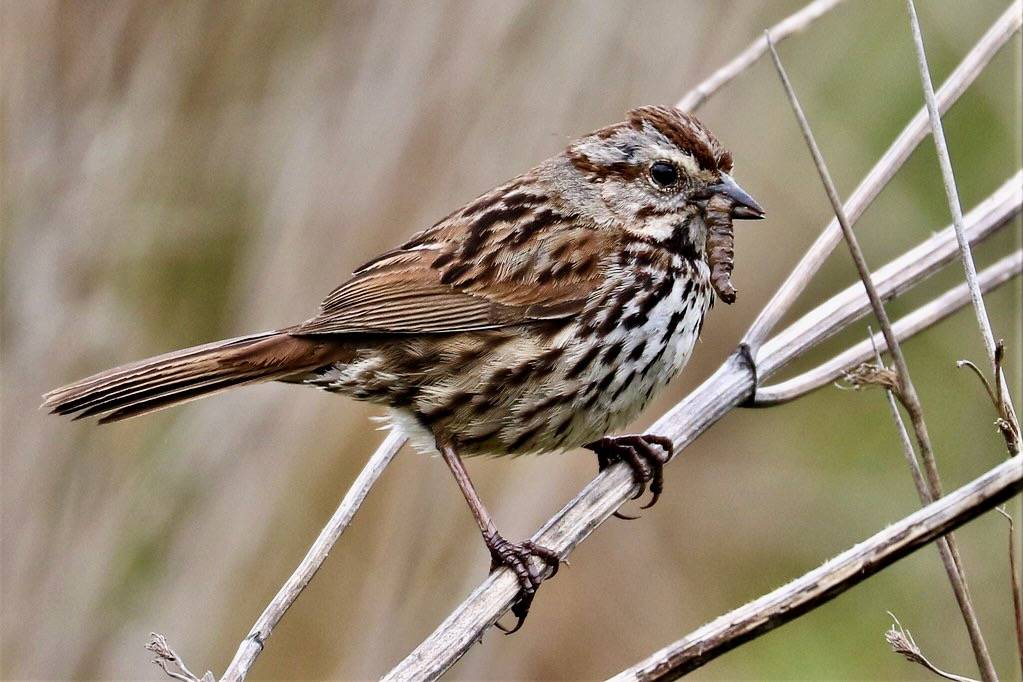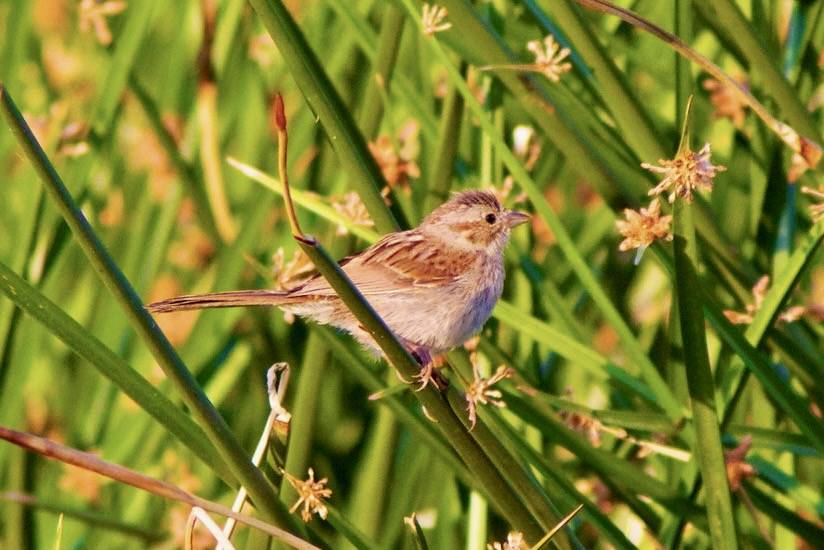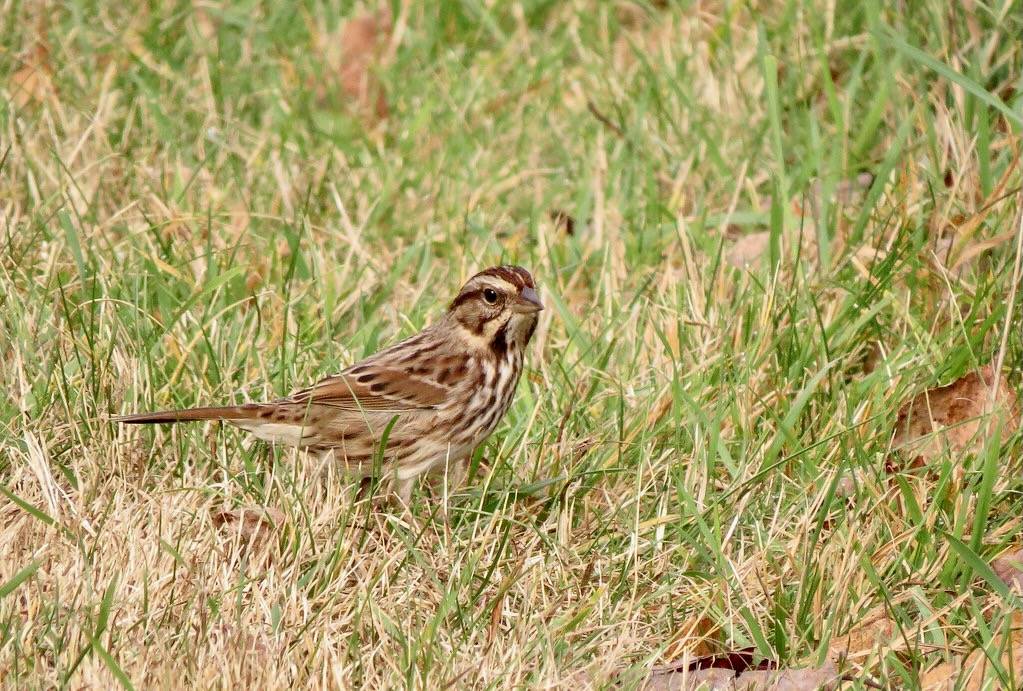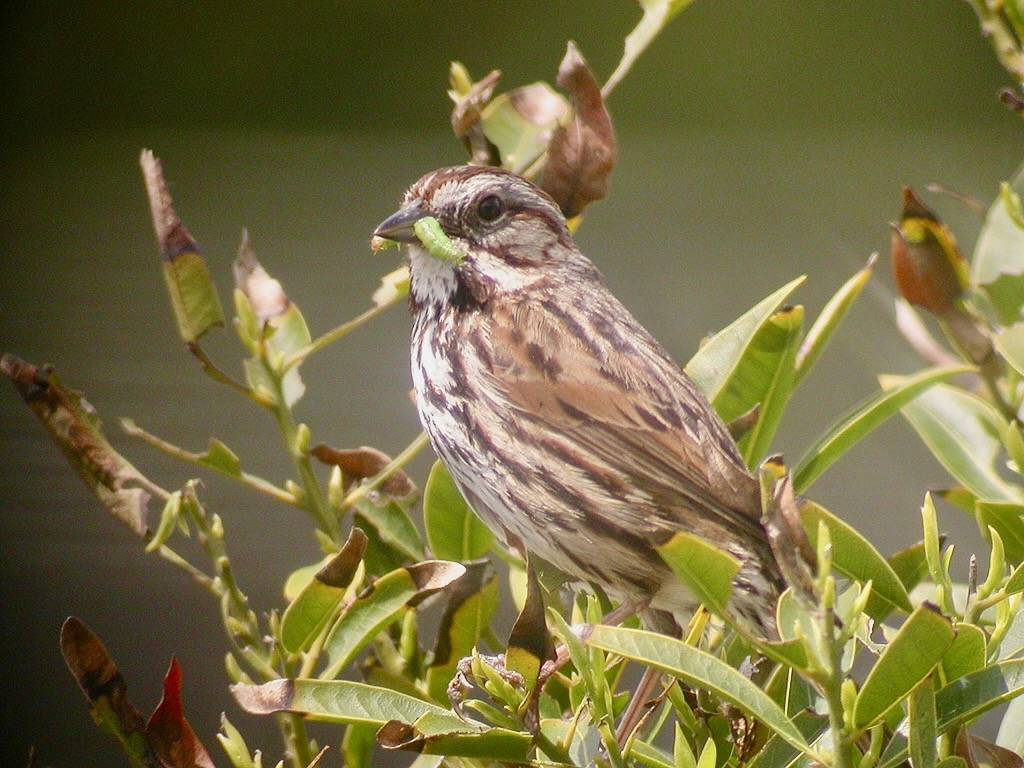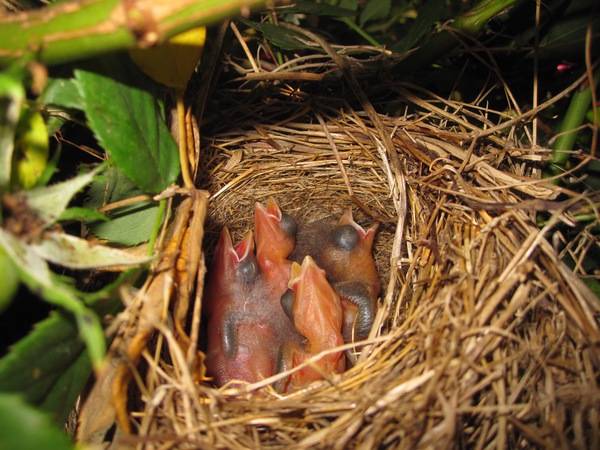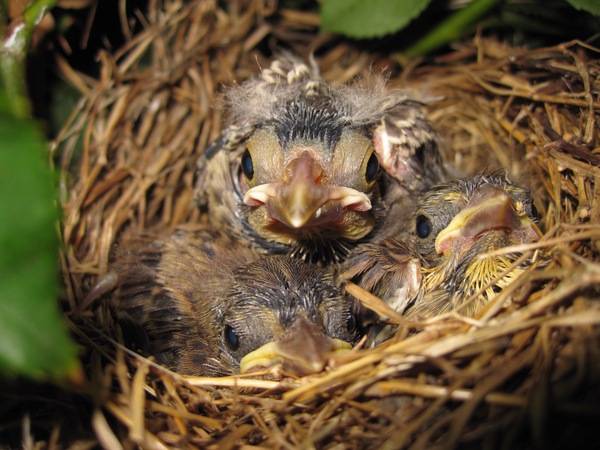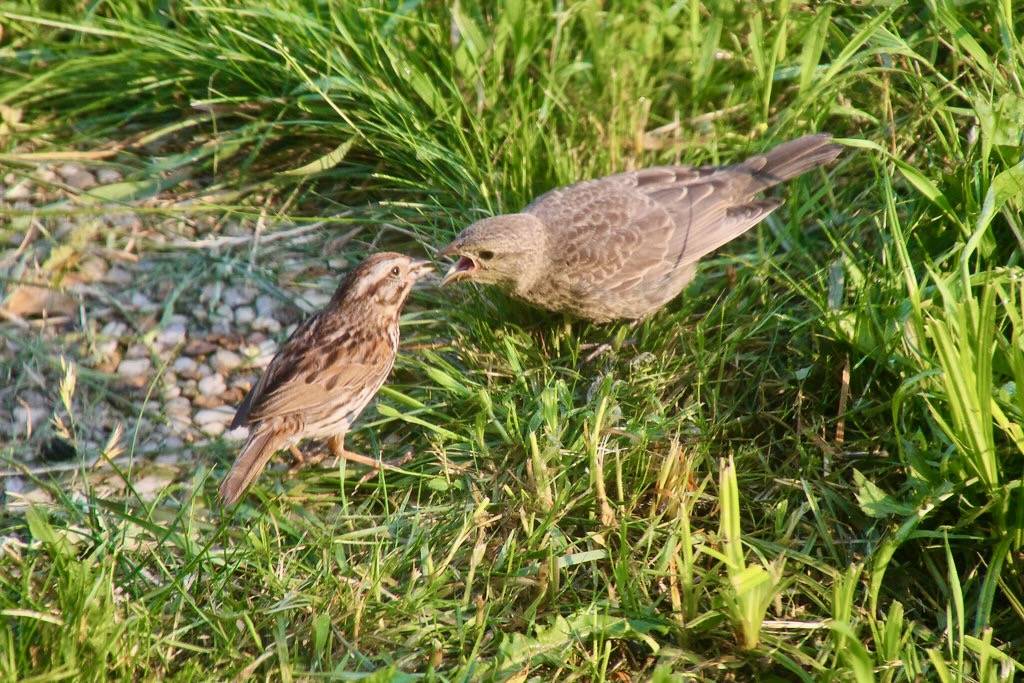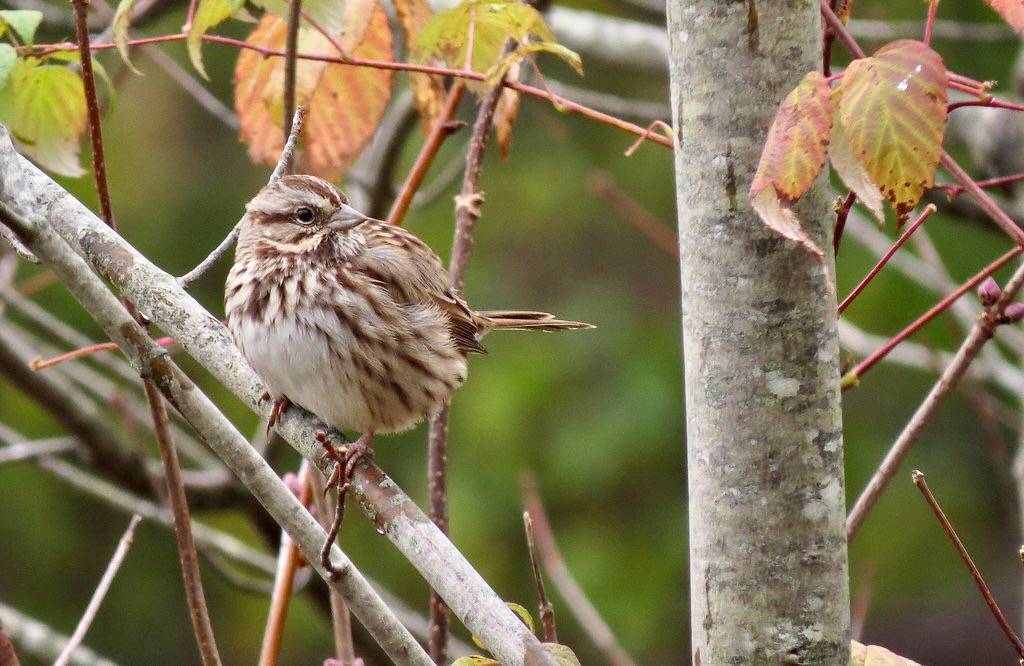Song Sparrow
If you see a sparrow at Salter Grove, it is likely to be the Song Sparrow, a year-round resident. It is particularly conspicuous in spring and summer when its song is heard throughout the park as males establish territories. In any month of the year, it can be seen flitting furtively between patches of low vegetation along the causeway, the Marsh Trail, or foraging for small insects and seed on lawns at the edge of woodland.
The Song Sparrow is so called because of its impressive repertoire of songs. A bird may only have a playlist of 20 songs, but each tune can have up to 1,000 improvisations. Males recognize and learn the songs of neighbors, and females show a preference for the songs of mates over other males. Outside the breeding season, single notes of "chip" or "ting" locate birds hidden in low thick brush.
Given that the Song Sparrow is the most common of eleven sparrow species documented for Salter Grove, a clear visualization of its appearance provides a handy template for identifying all the other sparrow species. Sparrows are notoriously difficult to tell apart due to their nondescript plumages and their fondness for hiding in shrubbery. Birders exasperated by their subtle, albeit distinct, differences often just list them as LBJ's or "little brown jobs".
The Song Sparrow has a brown cap with a light median stripe, and a longish brown tail. Its plumage is brown above and grayish cream below. Messy dark streaks overlay its body and are particularly conspicuous on its creamy flanks and breast which is centrally marked by a large dark spot.
In profile, it has a light grayish cream eyebrow which is mirrored below the grayish cheek with a broad submoustachial stripe. A brown line extends behind its eye, and there is a dark narrow wedge on the side of its white throat.
The Song Sparrow ranges across most of Canada and the United States. Southern populations winter in place on their breeding grounds whereas northern populations migrate to the southern states or Mexico. It is widespread and abundant in marshes and brushy landscape. It has adapted to human habitats such as agricultural fields, roadsides and suburban developments which provide the small insects and seeds important in its diet.
Stable populations occurring over such a large geographic expanse has led to the formation of 31 subspecies across its range. These populations share the same plumage pattern but vary in size, color and song structures. The abundant and widespread Song Sparrow has been the subject of numerous studies that explore the effect of climatic or geographic factors on breeding physiology and bill size.

